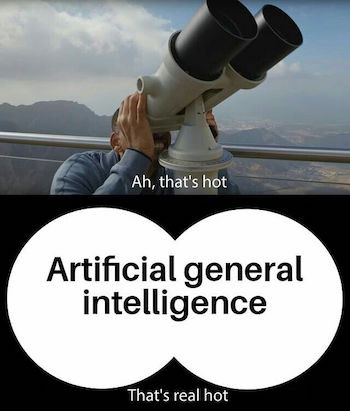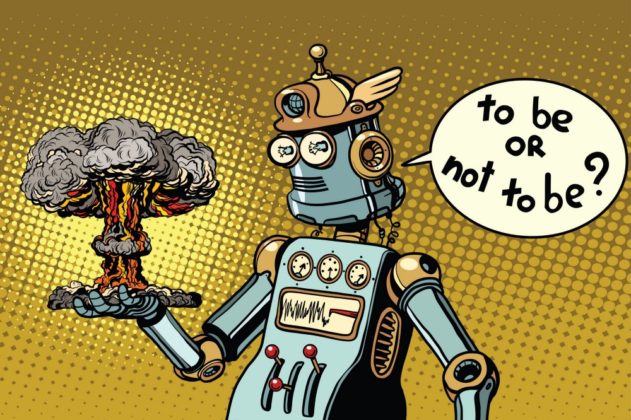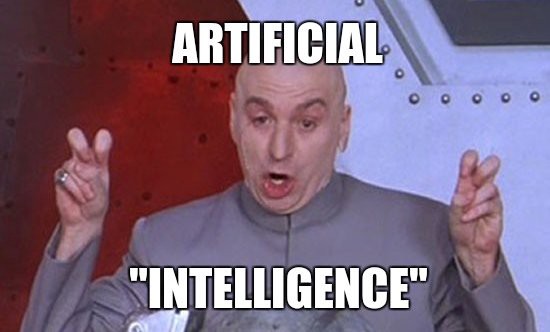What is Artificial Intelligence?

And how do we approach it at Bonomi

The term “Artificial Intelligence” has been around for a while, yet it is not a well-defined concept, but a rather fluid and ever changing one.
In layman terms, AI is a machine that can think and behave like a human. As in the book Artificial Intelligence: A Modern Approach([1]):
Colloquially, the term “artificial intelligence” is often used to describe machines (or computers) that mimic “cognitive” functions that humans associate with the human mind, such as “learning” and “problem solving”.
So, the question comes very early on: is AI only a “mimic” of human intelligence or is it real intelligence that is specific to humans produced by machines? For a complete answer, let’s start at the very beginning…
Changing definitions of AI
First of all, AI is a branch of computer science that is half a century old. As an academic discipline, it was founded in 1956 and research interest in the topic has ever since been fluctuating constantly. There were many positive stages when interest in the subject grew along with research funding, followed by times of disappointment when lack of funding and research interest was typical (these time periods with lack of funding and interest are called the AI Winter).

Consequently, the definition of AI also kept changing during these periods. New interest in the topic led to a new definition followed by a disappointment, and so on. This phenomenon is best summarised by Rodney Brooks in an interview with Wired:
Every time we figure out a piece of it [a piece of AI], it stops being magical; we say, ‘Oh, that’s just a computation’
This is something called the AI effect. For example, after IBM’s supercomputer “Deep Blue” beat Gary Kasparov in a chess game, researchers concluded that the machine’s intelligence wasn’t real intelligence, it was just following a procedure to evaluate each step ahead, but with a higher accuracy and speed than the opponent.
If this is still not yet clear, don’t worry, we are getting to the bottom of it soon.

Modern definitions of AI
Today, with thousands of real-life applications, the term is bit more well defined. Researchers have been busy identifying the keys to understand real intelligence, and to put it in the context of machines.
There are two frameworks in which AI can be placed at. The more informal one distinguishes artificial intelligence in terms of whether it is weak (“Weak AI”) versus whether it is strong (“Strong AI”).
Weak AI is also called narrow AI, because it is intelligence that is created to perform one specific (=narrow) task, as opposed to strong AI that could solve any problem.
Weak AI is defined in contrast to strong AI, a machine with the ability to apply intelligence to any problem
A good example of weak AI is Apple’s Siri. Siri was designed to understand speech and free text and act accordingly, and it can seem to be pretty intelligent if asked the right questions in the right way. However, Siri can also completely misjudge the situation and offer answers that are not even remotely appropriate in a given situation.
Weak AI is designed to solve only a specific problem in its narrow context, and it is generally “easy to break” and prone to work incorrectly in ways that are unpredictable.
Narrow < General < Super
Another categorisation defines AI in terms of its scope. It puts AI into 3 distinct classes: Artificial Narrow Intelligence (ANI), Artificial General Intelligence (AGI) and Artificial Super Intelligence (ASI).
What distinguishes general intelligence from narrow intelligence is that AGI can be applied to any problem (just like ‘strong AI’). As opposed to Narrow/Weak AI that was designed to solve one particular problem, yet struggles to cope with out of context circumstances, general intelligence is a machine that can apply intelligence to any task or problem to be solved.
Think of a robot that can figure out things on its own, without anyone explicitly teaching it. Unfortunately, we are not even close to solving the problem of creating a truly general form of intelligence.

However, scientists believe that once we will be able to, we will also very quickly get to something called Super Intelligence. ASI is envisioned to be a conscious and self-aware machine that would outperform humans in everything. Scary, right?
Expert systems vs Artificial Intelligence
To make things worse and even more complicated, AI can be defined in terms of human characteristics. Human intelligence consists of cognitive, emotional and social intelligence coupled with artistic creativity.
The following figure summarised the types of AI defined by Russel and Norvig ([2]):

On this scale, AI systems are more and more human like. Cognitive intelligence is something we discussed earlier that would give a machine analytical skills. Give this analytical AI some emotions and it would also feel like a human. There are a lot of exciting new projects that explore these concepts so that machines are getting closer and closer to being almost like humans.
And last, but not least, on the bottom of this scale are Expert Systems that can be argued to be not real AI.
Such systems use databases of expert knowledge to offer advice or make decisions in such areas as medical diagnosis and trading on the stock exchange.
An Expert System is designed to solve a problem that can be formalised in rules, or so called ‘if-else statements’. Such a system contains detailed information about the world and can aid humans in various ways, yet it lacks any real intelligence that is typical to humans such as learning or problem solving.

AI at Bonomi
Bonomi is a consumer of Narrow AI technologies and platforms that are readily available on the market.
The Assistant leverages an NLP provider that uses algorithms and machine learning techniques that can be considered “real AI”. There is also an engine on top of if that serves like an Expert System, with its capacity to gather external data, process it and make a rule-based decision on what answer shall be given to a certain text input. Our team maintains this system and keeps teaching it with new data to always give the right answer to the right question.
We also have a lot of very exciting new AI features in our vision that will make Bonomi Assistant an awesome side-kick to any traveler and a hardworking, 24/7 available receptionist for any hotel. For example, it will learn your preferences and give you personalised suggestions during your stay. It will also be able to identify wrong answers and seek out right answers without human intervention.
References
- https://en.wikipedia.org/wiki/Artificial_intelligence
- [1] Russell, Stuart J.; Norvig, Peter (2009). Artificial Intelligence: A Modern Approach(3rd ed.). Upper Saddle River, New Jersey: Prentice Hall. ISBN 978–0–13–604259–4.
- [2] “Kaplan Andreas and Haelein Michael (2019) Siri, Siri, in my hand: Who’s the fairest in the land? On the interpretations, illustrations, and implications of artificial intelligence, Business Horizons, 62(1)”. doi:10.1016/j.bushor.2018.08.004.
- https://www.wired.com/2002/03/everywhere/
- https://en.wikipedia.org/wiki/AI_effect
